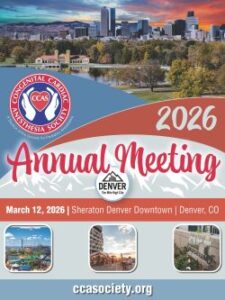Author: Nicholas Houska, DO - University of Colorado, Children’s Hospital Colorado
A one-month-old infant born to Hispanic parents in Southern Colorado presents with facial abnormalities, seizure disorder, congenital heart disease, and developmental delay. He is diagnosed with recombinant chromosome 8 syndrome (San Luis Valley Syndrome). Which of the following congenital heart defects is MOST likely to be associated with this syndrome?
EXPLANATION
First described by Fujimoto in 1975, Recombinant 8 syndrome, also known as San Luis Valley syndrome, is a rare genetic disorder most frequently encountered in children of Hispanic descent in the southwestern United States. This syndrome is presumed to have originated from a single founder who emigrated from Spain to Colorado or New Mexico. There is a 6.2 % risk for a parental carrier of the gene to have a child with the phenotype, with males and female offspring equally affected. The hallmarks of the disease are dysmorphic features, congenital heart defects, and developmental delay. Diagnosis is made through chromosomal analysis in children with clinical features and parental risk factors. Genetic counseling for families is recommended due to the carrier rate.
The dysmorphic features of children with San Luis Valley syndrome most commonly feature hypertelorism, wide face, thin upper lip, anteverted nares, abnormal hair whorl and infraorbital creases. These children also present with musculoskeletal abnormalities including abnormal tone, clinodactyly, deep plantar furrows, scoliosis, and pectus excavatum. Urogenital abnormalities are also common. Congenital heart disease is found in nearly all children with San Luis Valley syndrome, most commonly atrial septal defects and ventricular septal defects (50-69%), pulmonary stenosis (25-29%), Tetralogy of Fallot (16-40.5%), persistent left superior vena cava (14%) and double outlet right ventricle (8%). Case series have differed on whether these children have adverse surgical outcomes as compared to the general pediatric population, with recent studies (Pickler et al) suggesting no difference. Management includes cardiac, orthopedic, and urological surgery, along with neurodevelopmental support and rehabilitation. The most common cause of death in these children is related to congenital heart disease.
San Luis Valley Syndrome is associated with atrial septal and ventricular septal defects, and conotruncal defects such as Tetralogy of Fallot. It is not known to be associated with coarctation of the aorta or hypoplastic left heart syndrome.
REFERENCES
Gelb BD, Towbin JA, McCabe ER, Sujansky E. San Luis Valley recombinant chromosome 8 and tetralogy of Fallot: a review of chromosome 8 anomalies and congenital heart disease. Am J Med Genet. 1991; 40(4): 471-476. doi: 10.1002/ajmg.1320400420.
Pickler L, Wilson R, Tsai AC. Revisiting recombinant 8 syndrome. Am J Med Genet A. 2011; 155A(8): 1923-1929. doi: 10.1002/ajmg.a.34104.
Habhab W, Mau-Holzmann U, Singer S, Rieß A, Kagan KO, Gerbig I, Schäferhoff K, Dufke A, Kehrer M. Pre- and postnatal findings in a patient with a recombinant chromosome rec(8)(qter→q21.11:p23.3→qter) due to a paternal pericentric inversion inv(8)(p23.3q21.11) and review of the literature. Am J Med Genet A. 2020; 182(11): 2680-2684. doi: 10.1002/ajmg.a.61804. .
Fujimoto A, Wilson MG, Towner JW. Familial inversion of chromosome No. 8: an affected child and a carrier fetus. Humangenetik. 1975; 27(1): 67-73.
